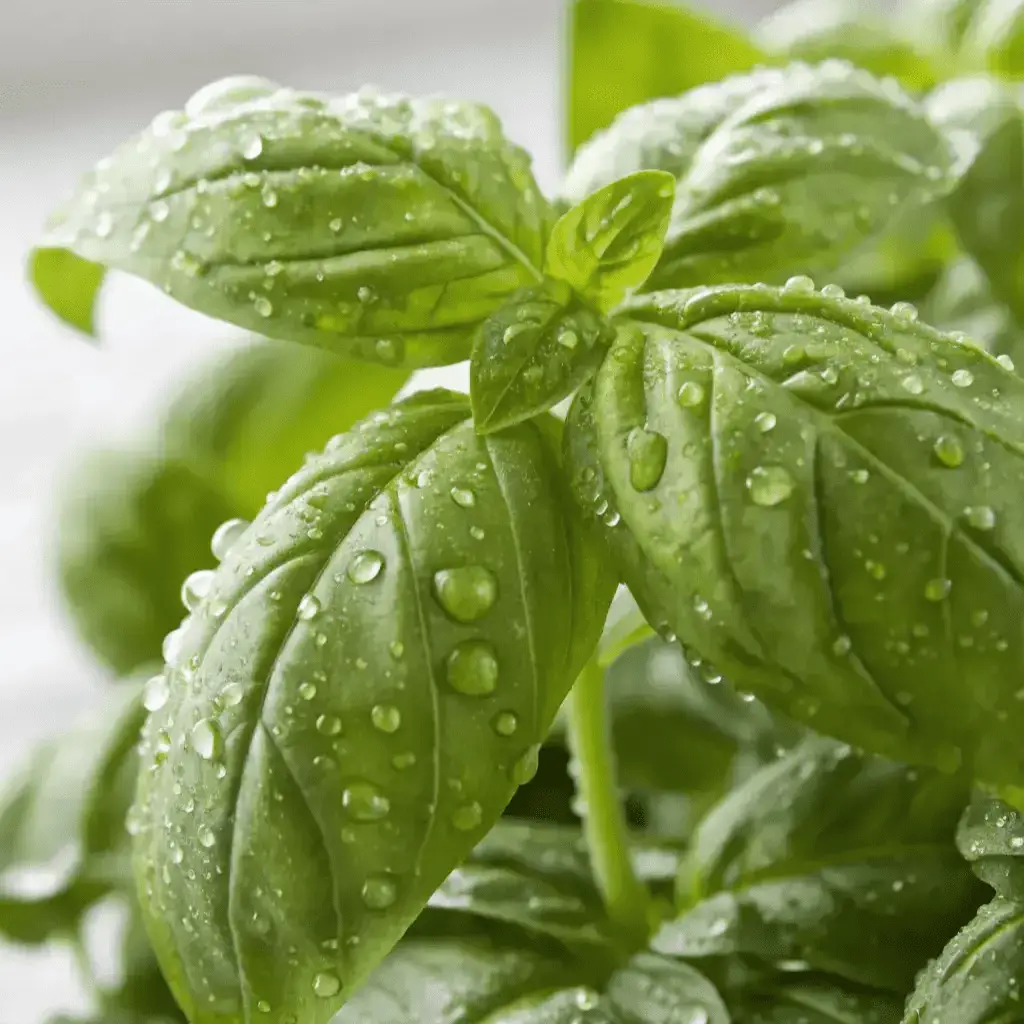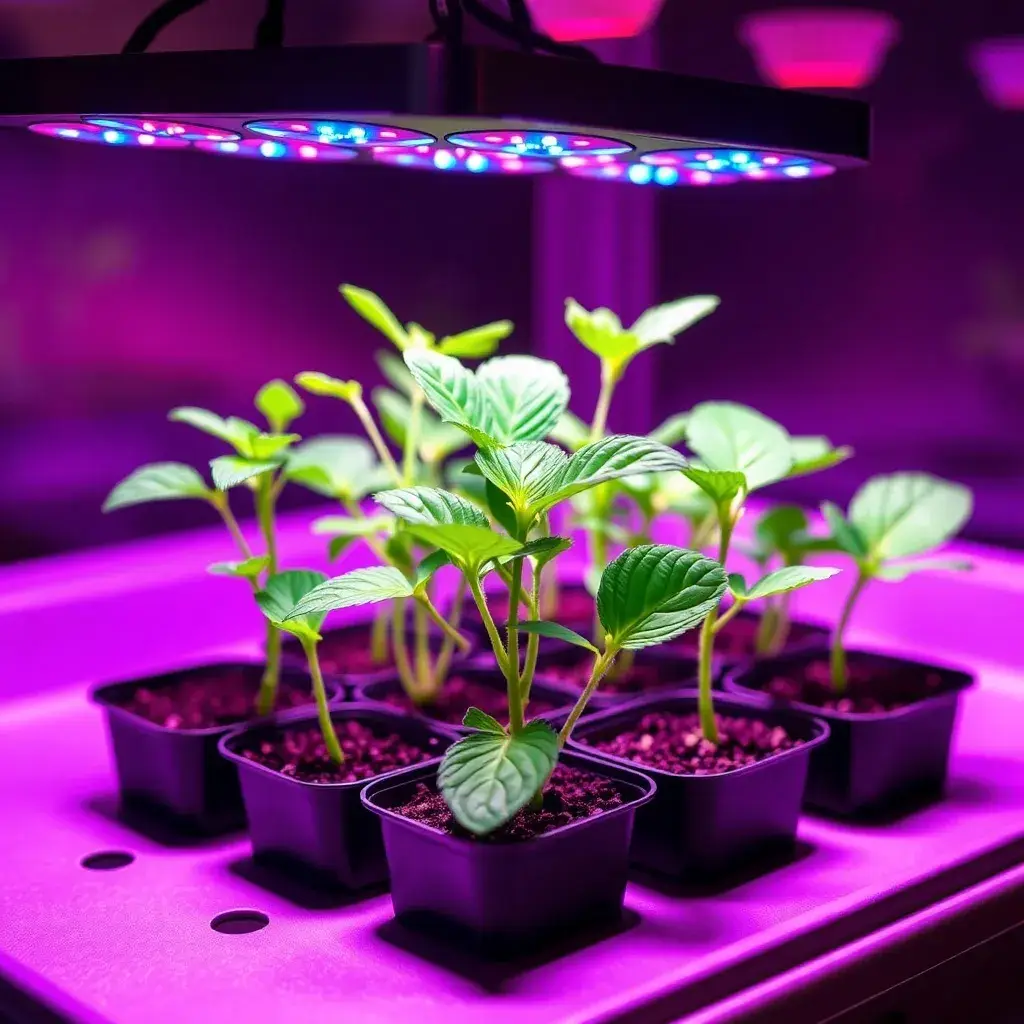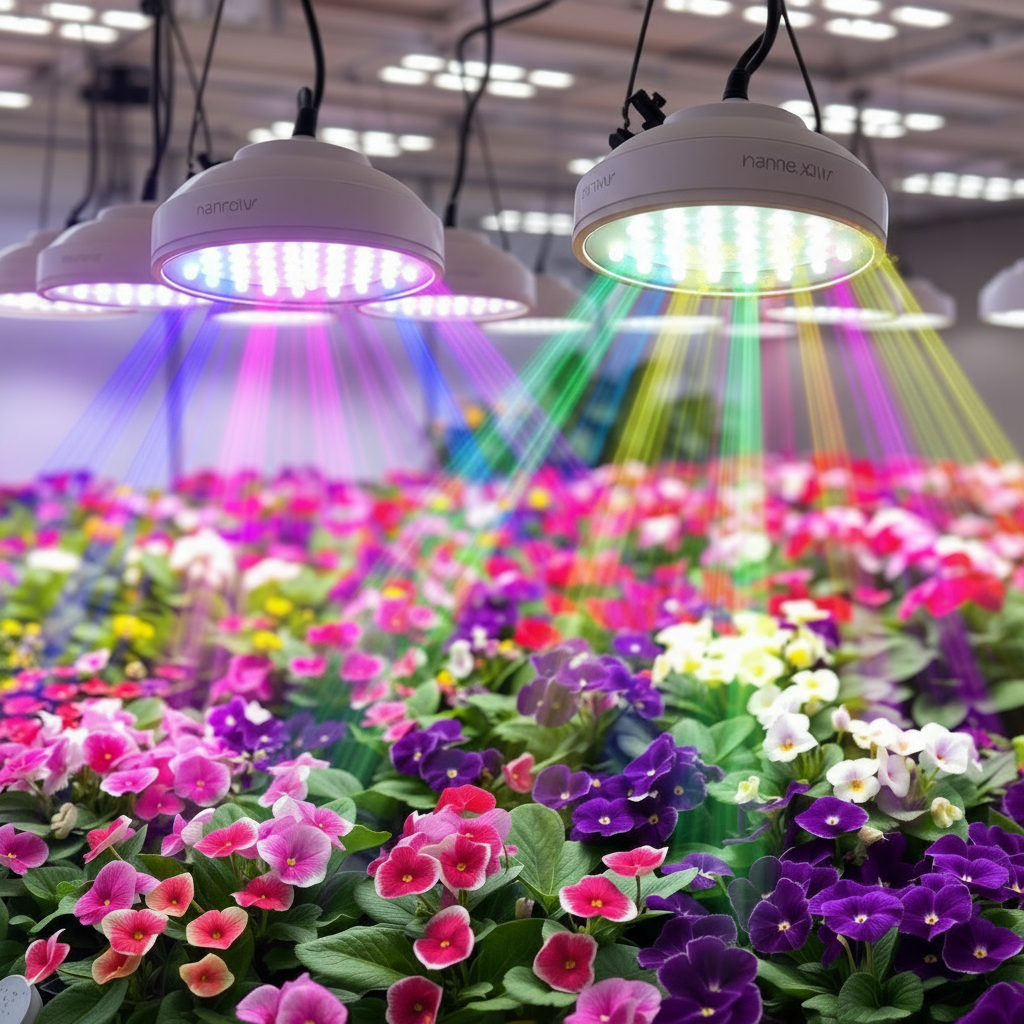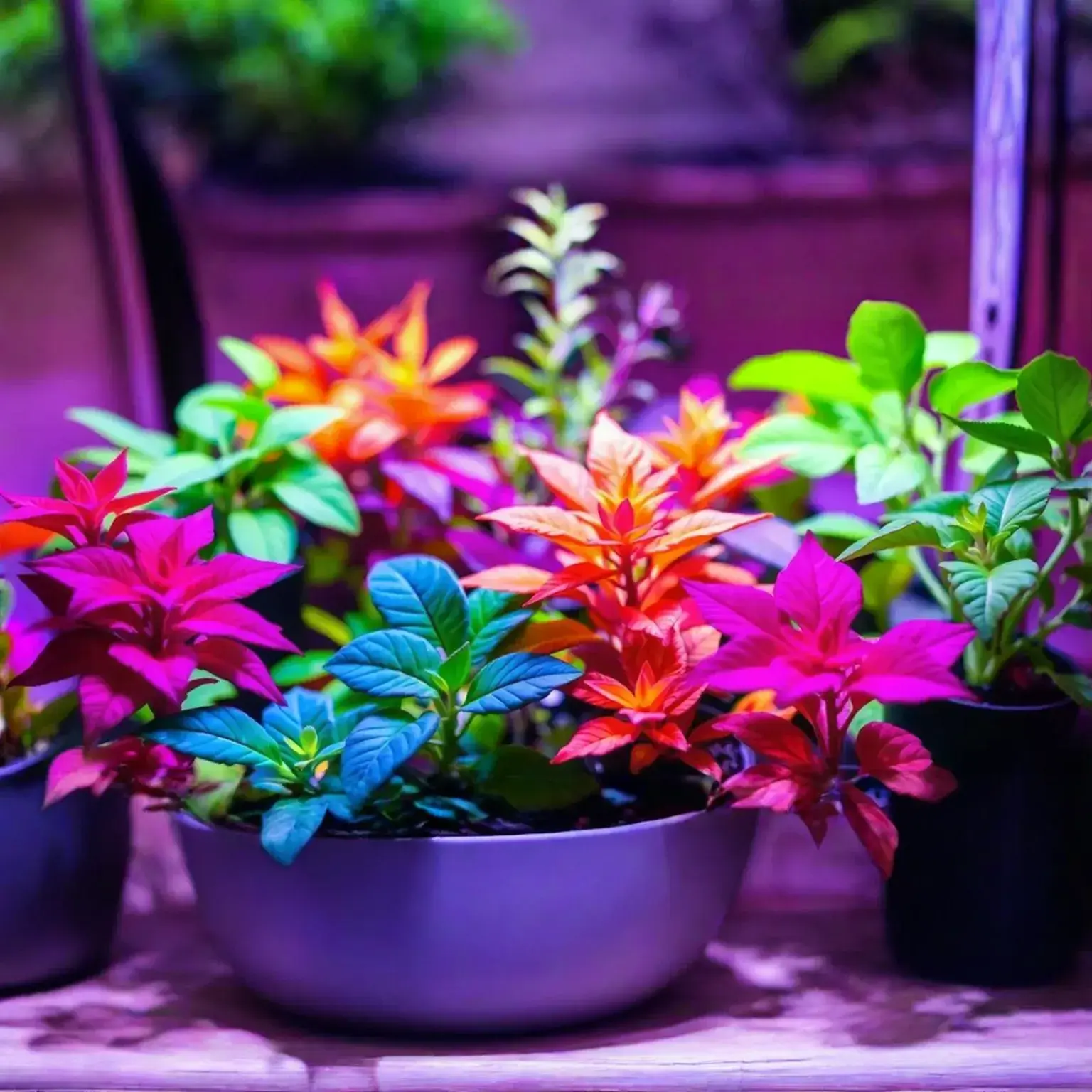Discover the Versatility of Nano Grow Lights for Your Garden
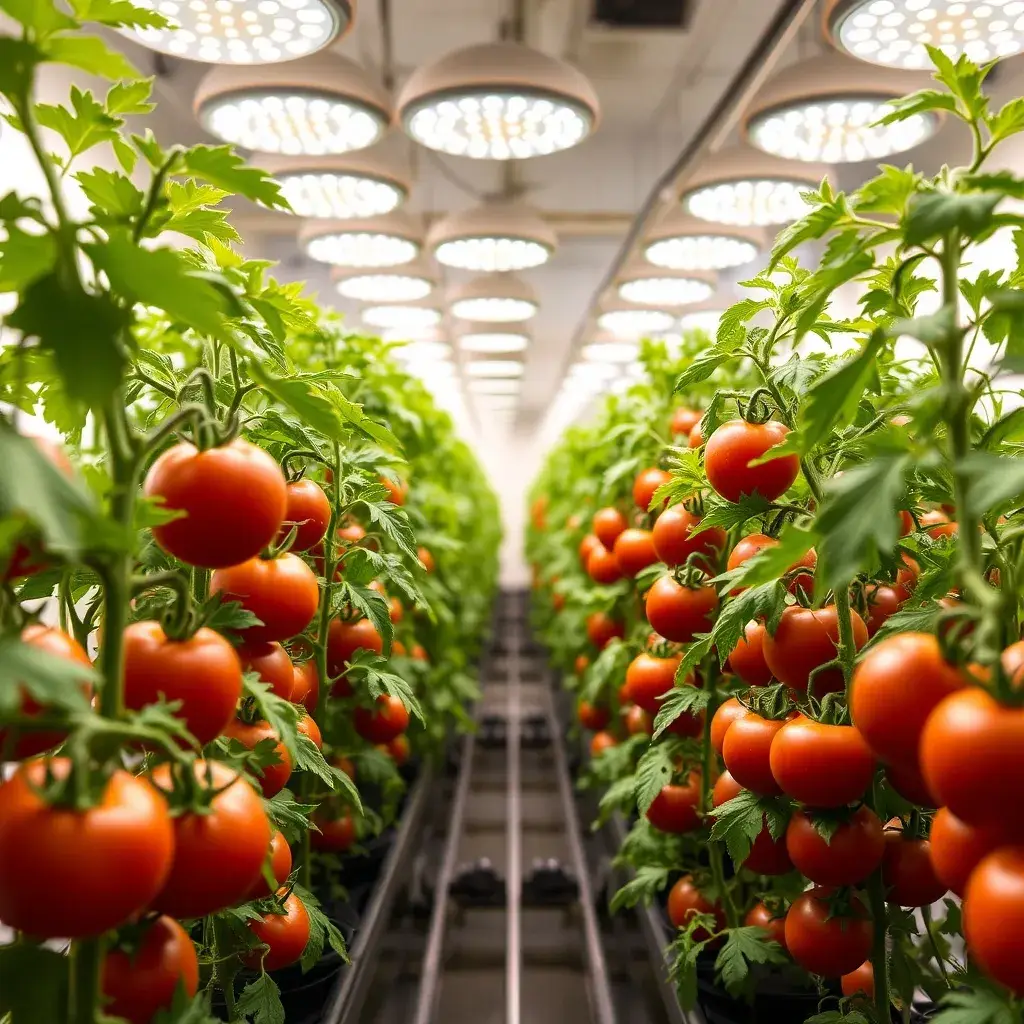
Thriving Tomatoes

Aromatic Herbs
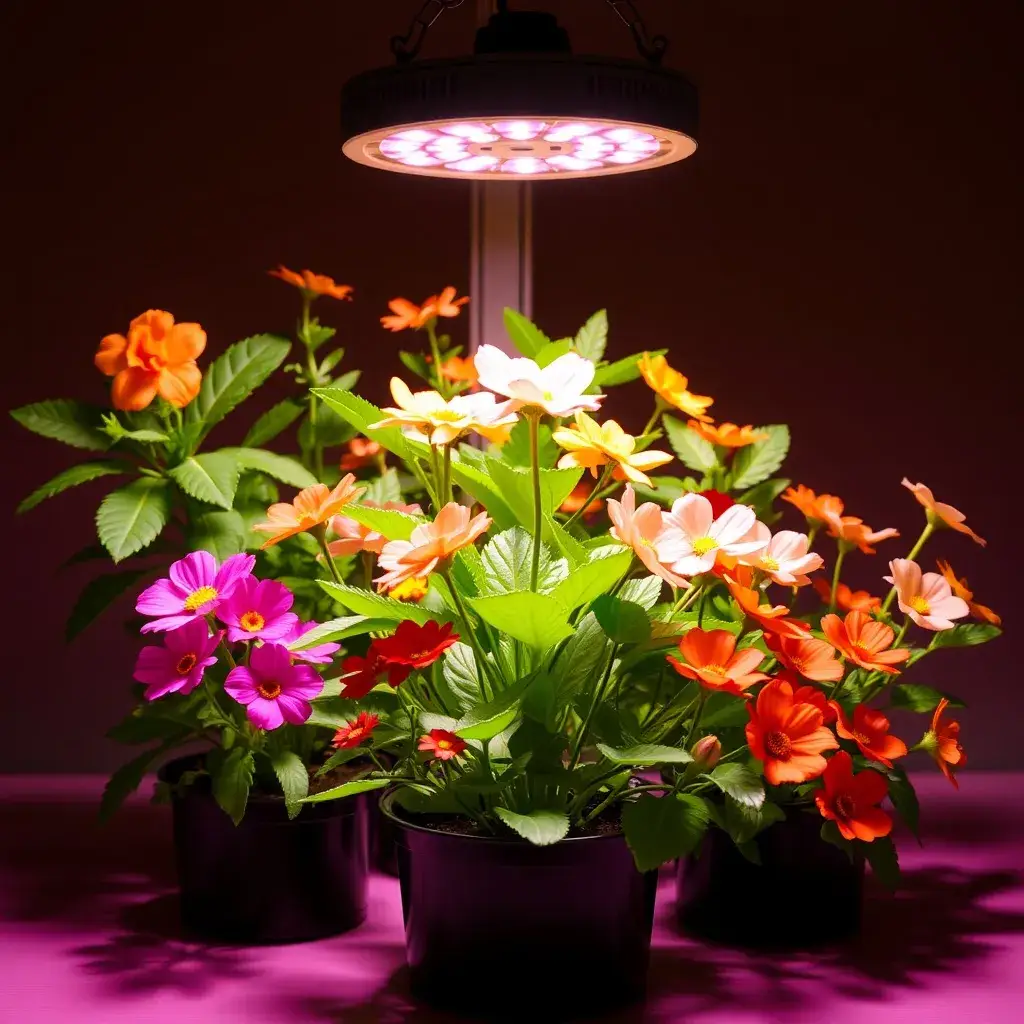
Blooming Flowers
Experience faster, healthier plants with our revolutionary nanotech grow lights that boost growth speed and color vibrancy.
Nano is incredibly small. To help put it in perspective, here’s a comparison of nano-sized objects to more familiar things:
- 1 nanometer (nm) is one billionth of a meter.
- A strand of human DNA is about 2.5 nm in diameter.
- A single hemoglobin molecule (which carries oxygen in red blood cells) is 5 nm across.
- Most proteins are around 10 nm wide.
- A typical virus is about 100 nm wide.
- A bacterium is about 1000 nm (or 1 micrometer) in length.
- A human hair is approximately 80,000-100,000 nm (or 80-100 micrometers) wide.
- A sheet of paper is about 100,000 nm thick.
Discover the Future of Plant Growth with Nano Grow Lights
How Nano Grow Light Works
1. Nano-Structured Reflector Coating
The core of Nano Grow Light’s innovation lies in its nanostructured reflector coating. This coating consists of alternating dielectric and plasmonic layers, each on the order of 10–100 nm, engineered to maximize internal reflection and direct photons downward.
Dielectric layers tune the refractive index gradient, minimizing scattering losses.
Plasmonic layers (e.g., silver or aluminum nanoparticles) resonate at target wavelengths, enhancing directional emission.
Layer thicknesses are optimized via finite-difference time-domain (FDTD) simulations to achieve > 98 % reflectivity in the 400–700 nm band.
2. Spectral Engineering
Nano Grow Light delivers a tailored spectrum that matches plant photoreceptor absorption peaks. The guardrail of photosynthetically active radiation (PAR) spans 400–700 nm, but peak efficacy occurs around 450 nm (blue) and 660 nm (red).
Emission peaks: 450 nm (blue) ± 10 nm; 660 nm (red) ± 15 nm
Red-to-blue photon ratio configurable from 1.5:1 to 4:1 via embedded microcontrollers
Spectral power distribution (SPD) tuned for optimal chlorophyll a/b and phytochrome activation
3. Photon Flux Density & Distribution
Photon flux density (PPFD) quantifies the number of photons available for photosynthesis per area per second. Nano Grow Light achieves uniform PPFD across the plant canopy using an array of collimated diodes and nano-reflector arrays.
Display-style equation:
Typical PPFD output: 600–1200 µmol m⁻² s⁻¹ at 30 cm distance
Uniformity index (min/max PPFD ratio) > 0.85 over a 1 m² footprint
Beam angle: 90° collimation with secondary nano-lens arrays
4. Thermal Management & Efficiency
To maintain diode efficiency and longevity, heat must be removed effectively. Nano Grow Light integrates a composite heatsink and phase-change interface material (PCIM).
| Component | Material | Thermal Conductivity (W·m⁻¹·K⁻¹) |
|---|---|---|
| Heatsink fins | Anodized aluminum | 205 |
| Phase-change interface | Graphene-enhanced polymer | 15 |
| Nano-coating substrate | Aluminum oxide | 30 |
Active cooling via low-noise axial fan or passive convection fins
Junction temperature maintained below 60 °C at full power
System efficacy: up to 2.8 µmol J⁻¹
5. Photoreceptor Activation & Plant Response
Controlled spectrum and light intensity directly influence plant photoreceptors:
Chlorophyll a absorbs maximally at 430 nm and 662 nm.
Chlorophyll b absorbs at 453 nm and 642 nm.
Phytochromes (Pr/Pfr) regulate flowering and leaf expansion at 660 nm / 730 nm.
By modulating spectral ratios and photoperiod program, Nano Grow Light:
Accelerates photosynthetic rates by up to 30 %
Promotes compact, vibrant blooms in African violets
Enables programmable day/night cycles for flowering induction
6. Control Electronics & Automation
An onboard microcontroller and wireless interface enable precise scheduling and intensity control. Key features:
PWM dimming at > 20 kHz to avoid flicker artifacts
Day-night cycle presets and custom routines via mobile or web app
Sensor integration: ambient light, temperature, and humidity feedback loops
7. Performance Metrics & Comparative Data
| Metric | Nano Grow Light | Standard LED Grow Light | Fluorescent Tube |
|---|---|---|---|
| PPFD at canopy (µmol) | 800 | 600 | 350 |
| System efficacy (µmol/J) | 2.8 | 1.7 | 1.2 |
| Thermal stability (°C) | < 60 | 75–85 | 70 |
| Bloom vibrancy increase | + 25 % | + 10 % | + 5 % |
8. Recommended Operational Protocol
Mount lights 20–30 cm above leaf surface for African violets.
Run photoperiod: 12 h light / 12 h dark for vegetative growth; switch to 10 h light / 14 h dark to induce flowering.
Monitor PPFD with a quantum sensor; adjust dimming to maintain 800 µmol m⁻² s⁻¹.
Maintain ambient temperature between 22–26 °C and relative humidity at 50–60 %.
Conclusion
Nano Grow Light merges nanotechnology, precision optics, and intelligent control to deliver optimal lighting conditions for African violets and other ornamentals. By engineering at the nanoscale, it maximizes photon delivery, ensures spectral fidelity, and maintains thermal efficiency—culminating in more vibrant, contest-worthy blooms.
Advanced Multi-Spectral Arrays: Integrating UV-A for Secondary Metabolite Enhancement
At its core, adding UV-A diodes (380–400 nm) to your Nano Grow Light array stimulates the plant’s phenylpropanoid pathway, boosting compounds like anthocyanins and flavanols by up to 30–40 %. Controlled UV-A pulses, combined with blue and red peaks, create dynamic “light recipes” that fine-tune pigment synthesis for deeper color, greater antioxidant activity, and more contest-winning blooms.
1. UV-A’s Role in Secondary Metabolism
Plants perceive UV-A through the UVR8 photoreceptor, which triggers gene expression in the phenylpropanoid pathway. Key effects include:
Activation of chalcone synthase and flavonoid biosynthesis enzymes
Accumulation of anthocyanins, flavanols, and other UV-protective pigments
Mild reactive oxygen species (ROS) signaling that upregulates antioxidant defenses
Enhanced leaf surface phenolics, improving visual saturation and stress resilience
2. Multi-Spectral Array Design
| Wavelength Range | LED Type | Purpose |
|---|---|---|
| 380–400 nm | UV-A (365–385 nm peak) | Secondary metabolite elicitation |
| 450 ± 10 nm | Blue | Chlorophyll excitation, stomatal regulation |
| 530 ± 20 nm | Green | Canopy penetration, even PPFD distribution |
| 660 ± 15 nm | Red | Photosynthesis peak, flowering induction |
| 730 ± 20 nm | Far-red | Shade-avoidance response, flowering control |
Diode counts are balanced to achieve a base PAR of 800 µmol·m⁻²·s⁻¹
UV-A array delivers 5–15 µmol·m⁻²·s⁻¹ in targeted pulses
Nano-lens arrays collimate beams for uniform canopy coverage
3. UV-A Treatment Protocols
To maximize metabolite synthesis without photodamage:
Pre-dawn UV-A pulse: 15 minutes at 10 µmol·m⁻²·s⁻¹
Dusk UV-A twilight: 20 minutes at 8 µmol·m⁻²·s⁻¹
Alternate-day scheduling to allow recovery and reset ROS signals
Integrated with 12 h blue/red PAR for vegetative growth and 10/14 h shift to flowering
4. Control Electronics & Spectral Modulation
Your onboard microcontroller and app interface can:
Schedule UV-A pulses via high-frequency PWM (> 20 kHz)
Blend spectra dynamically: ramp UV-A up/down to avoid spikes
Use ambient light and leaf-temperature sensors for closed-loop feedback
Store and recall custom “metabolite boost” recipes for different cultivars
5. Safety & Material Considerations
UV-A exposure demands:
Borosilicate or quartz covers—standard acrylic yellows over time
Ocular protection signage for greenhouse staff
UV-stable black anodized heatsinks and gaskets
Regular cleaning schedules to prevent dust build-up and UV attenuation
6. Expected Outcomes & Validation
| Metric | Control (No UV-A) | + UV-A Pulses (%) |
|---|---|---|
| Anthocyanin concentration | 1.2 mg/g FW | 1.6 mg/g FW (+ 33 %) |
| Flavonol index (UV-vis assay) | 0.85 | 1.15 (+ 35 %) |
| Color saturation (ΔE in L\a\b\*) | 15 | 19 (+ 27 %) |
Validate through spectrophotometry, HPLC profiling, or handheld pigment meters to quantify gains.
Next Steps & Further Innovations
Trial UV-B micro-pulses (312–315 nm) for trichome-borne metabolites
Integrate chlorophyll-fluorescence sensors (Fv/FM) for real-time stress monitoring
Develop AI-driven light-recipe optimization based on varietal response
Explore smart glass coatings that filter and recycle UV wavelengths
